January 1st 2017
Our first day of 2017, we were in Barrhead, Alberta, Canada. It was the last day of our holiday visiting family there. This first picture was taken at the home of Ingrid's sister, Karin, who is pictured here along with her husband, Christian and their parents.
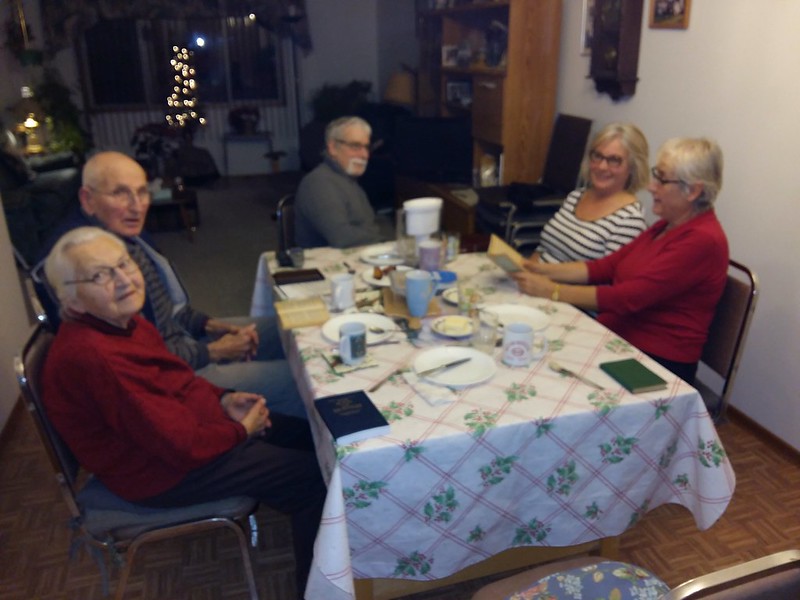
Winter is a bit colder in Alberta than Thailand or central California. There wasn't a lot of snow, but the temperatures were usually below -15C. I got used to taking walks on the snow roads and foot paths. Barrhead is a small town, and one can walk around the whole place in a few hours. Photo below is a rural scene on the west side of town. The corn stubble from silage is poking through the thin layer of snow. Nearby, cattle were feeding off of some hay that had been brought in.
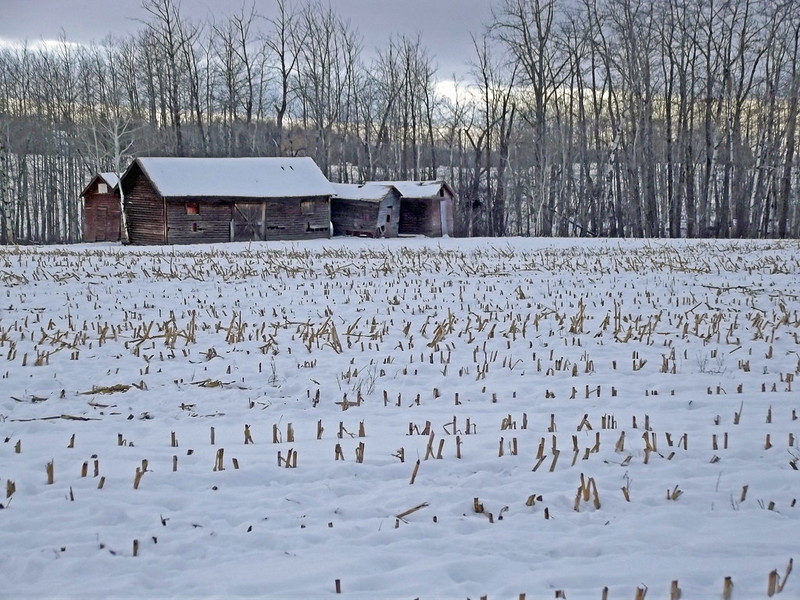
December 31, 2017
A year later the agricultural landscape is a bit different. Below is a series of slides from a bike ride I took on the last afternoon of the year. It was not a long ride because I was in recovery on a couple of fronts. First, my elbow was still healing from a hairline fracture I sustained about 10 weeks earlier. This was only my second ride in over a month.
Second, I had a bad sinus cold for the past week, and in the middle of that, also a bout of food poisoning. So I wasn't really energetic.
My first stop was at a tapioca (manioc) field. Manioc and rubber are often planted in non-irrigated areas here. The soil is quite poor, especially in these gently undulating hill landscapes.
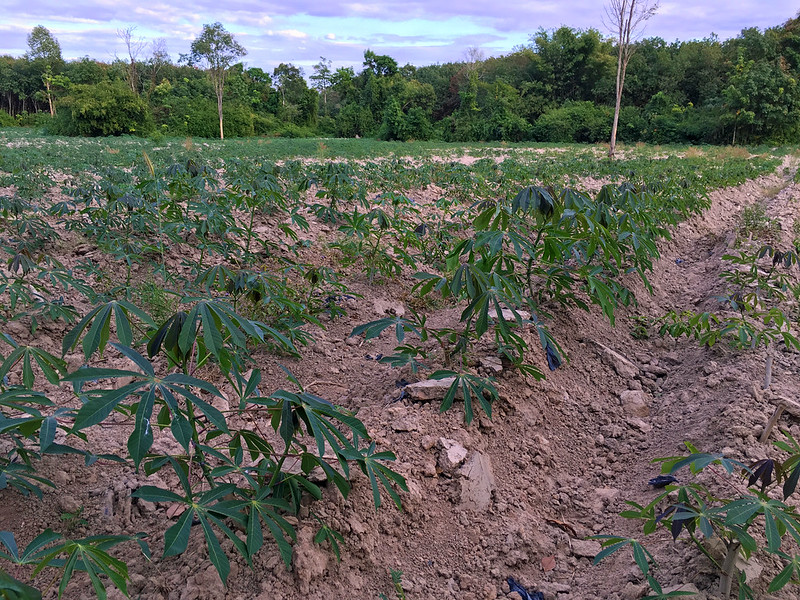
Manioc and rubber are both in the plant family Euphorbiaceae. This is a plant family whose members have a milky latex. In the case of the rubber trees (below), that latex is used to produce rubber.
The roads around here are often red colored. That is not typically the color of the native soil, which in these hilly areas is often white. But, instead, the red material is mined from the deeper layers of the soil, which, when extracted, has the consistency of silt mixed with fine gravel. Further below is a photo from one of the borrow pits where this stuff comes from.
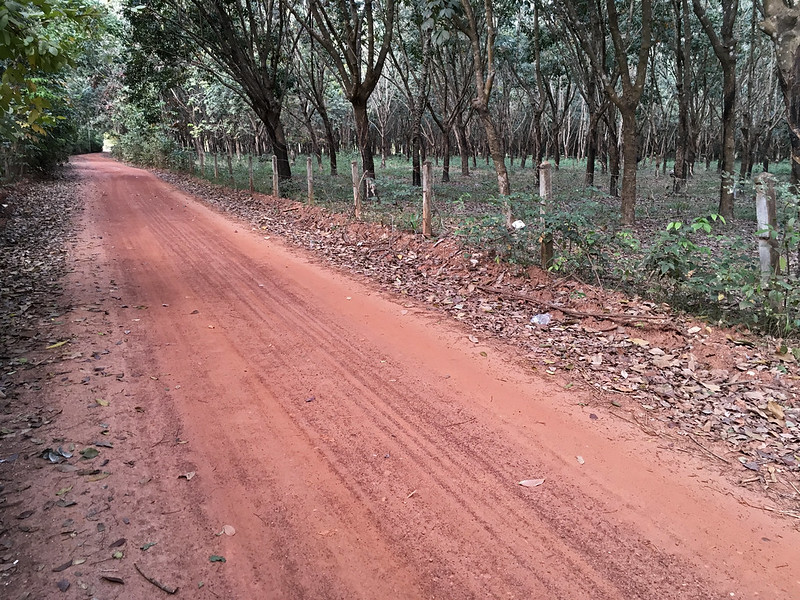
A more common plant in the Euphorbiaceae family that we know from Christmas time is the poinsettia. Poinsettias grow wild in some of the mountains of Thailand, but around here we mostly see the hybrid forms sold at this time of year.
Christmas is not much of a holiday here, but the Thai people have borrowed some of the elements of Christmas to blend with their New Years celebration--which is one of the major holidays. Below is a "New Years Tree" made of poinsettias set up along the banks of the Mekong River in town. (This photo was taken a day earlier)
The snowman reminds me of "Jack" from the commercials in the US.
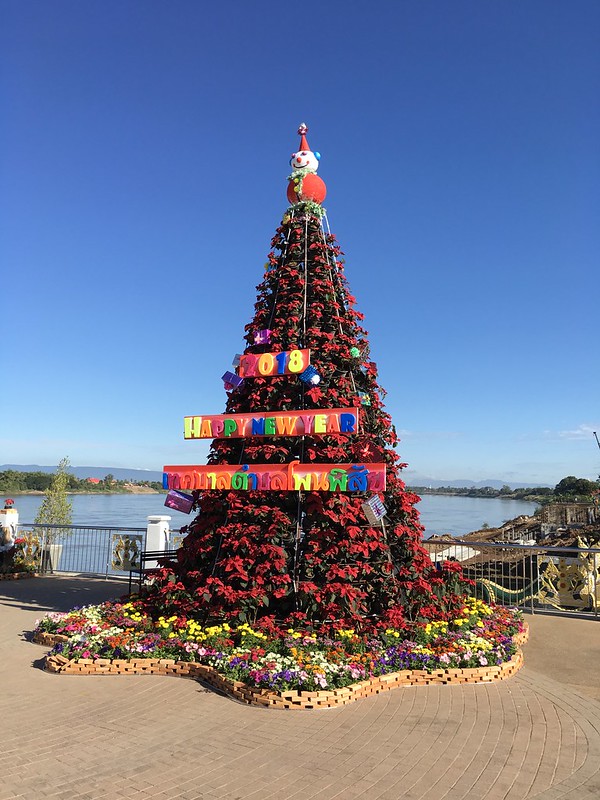
Another crop I bicycled through was oil palms. Oil palm trees are very pretty because ferns are typically found growing in the notches where the leaves attach to the stem of the tree. It lends a lush, tropical feel to the landscape. (Or, in less euphemistic terms, it's a reminder that you are in a hot, humid part of the world.)
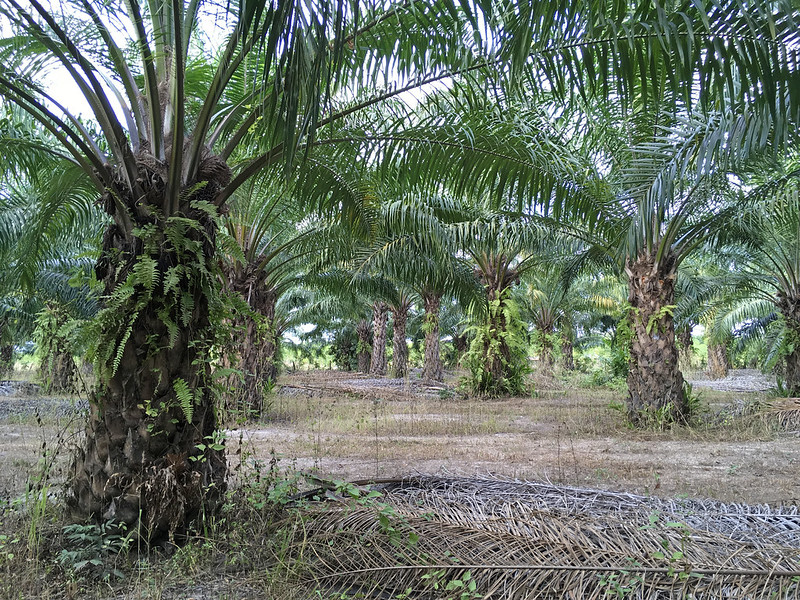
As I left the hilly area and was approaching town, I came to some old borrow pits that had been used for the red fill material one sees used so much for roads and building construction. The pits are full of water and the clouds were reflecting nicely in the late afternoon.

A bit closer to town, I near the rice growing areas. Much of Isaan is dependent on rainfall to grow crops. The rainy season rice was harvested about a month ago. Now these paddies sit idle, serving mostly as an area to graze cattle.

A little lower down, irrigation water is available. Here they will plant a second crop of rice. These paddies were flooded a few days ago and, while flooded, were smoothed with a rototiller on a tractor. Now, the weeds have come up. I assume they will kill those off with herbicide before planting their next crop. Soon, these field will be lush green with the new rice.
Almost home now--our house is behind the trees at the back of the rice paddies.
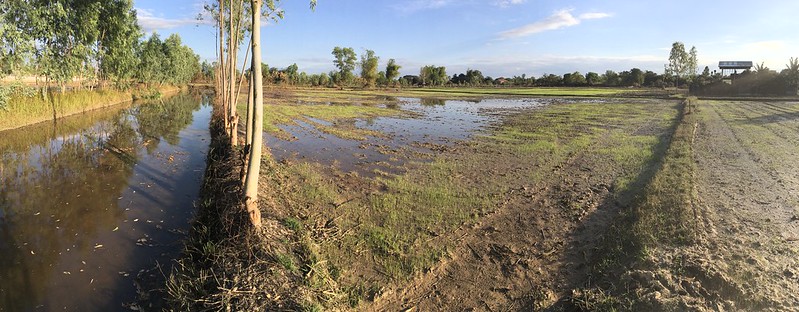
Looking at the rice paddies I am reminded of the rhythms of life. The farmer plows, then sows, then tends his crops and finally reaps the harvest. These transient cycles stand in contrast to the permanence of God.
Our days on earth are like grass;
like wildflowers, we bloom and die.
The wind blows, and we are gone—
as though we had never been here.
But the love of the LORD remains forever with those who fear him.
His salvation extends to the children’s children
of those who are faithful to his covenant,
of those who obey his commandments!
Psalm 103:15-18 (NLT)

Oh how I pray that our children will seek the Lord I have found SO faithful! Thank you for your observations.
ReplyDelete